5 Golf Improvement Hacks: How to Get Your Game Unstuck and Back On-Track Fast with Hack # 530/8/2014
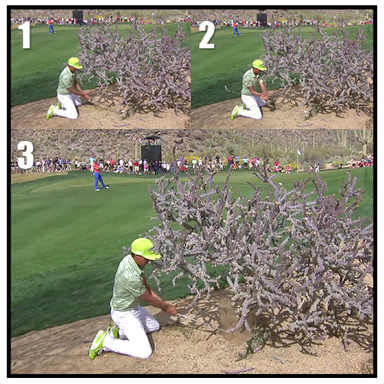 Click on the image to make it larger Click on the image to make it larger The key to success and longevity in golf is to be really good at dealing with the inevitable ‘ups and downs’ of the game. The fact is that for the most part golf is a very challenging and difficult game to play because of the continuous challenging encounters you face whilst playing. These challenges vary greatly, but range from shots into greens with challenging undulations and tight pin placements, through to the various types of lies you get off the fairway (and on) that could be described as good, bad and ugly. And let's not forget the weather conditions as well. Golf is a great game because of the inherent challenges and difficulties you face. Consider that with such a difficult game, to get really good at it you must practice the challenging shots more often so you prepare yourself to play the game without having to deal with the ‘surprises’ that you encounter on your way around the golf course. How often do you get 'surprised' on the way around? How many times do you get confronted with shots you haven't spent enough time practicing? Today’s last hack is the true game turnaround hack that will get you out of your rut and moving towards your 12 month plan of achieving something meaningful and worthwhile with your golf. 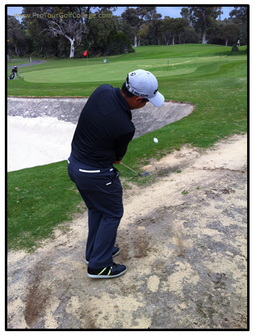 Practice tough lies more often Practice tough lies more often Why Do You Practice? When you go to work on your game we want you to keep in mind that the primary reason you are practicing your golf skills is to develop them and use them to create a competitive score average. You want to play golf to a level where you are more competitive right? That is, you are practicing not to look good, but to play good. It's not just to enjoy the challenges of the game, and the joy of the walk around the golf course, but also to win a tournament--or at least play to a standard where the potential for this to happen is increased. So when you practice, knowing that golf is a difficult game to produce a lower score average, ask yourself what the road blocks might be that keeps you from scoring lower. We have noticed that most of these roadblocks in golf development for advanced golfers get down to a simple and fundamental flaw in how they go about developing their game. They practice their golf skills in ‘perfect conditions,’ that is, they practice with their ball on the best lie on the grass, or in the sand, or on a flat and level surface, and they spend little to no time developing their skills with tough lies. So here’s the final golf improvement hack—Hack #5 the key to getting yourself out of your current performance rut and truly making progress with your golf game. Golf Improvement Hack # 5 – Make Your Practice Conditions Tougher and You Will Become Tougher If you always practice golf shots from good lies you will condition your nervous system to accept this as the reality and you will be at your best only when external conditions align with your perception. And anytime you perceive that the conditions aren't favorable, you will not at your best. You will develop into a ‘good conditions golfer,’ a golfer who potentially only plays good when golf course conditions are matched to the practice conditions you have habituated, and as a result you will never learn how to adapt, grow and accept the challenges of this great game. Actually what you want to do is to put your skills under continuous pressure in very challenging ways to condition your nervous system to be at its best when the golf course conditions are toughest. Instead of placing the ball drop it. This is a good start to learn how to accept the good, bad and ugly lies. Victor Dubuisson's Great Escape in the Accenture Matchplay Acceptance and No Judgment The skill to develop is the skill of no judgement or complete acceptance of the shot at hand. Basically you set up your practice conditions so that 70 percent of the shots you play are challenging enough that your perceived stress level rises (see scale below) because the level of challenge stretches the competence level of your skills to uncomfortable. You will learn through practicing challenging shots over and over to simply accept the condition of the ball and the shot confronting you as a normal part of playing the game, and you will learn to get on with the shot at hand with no fuss. Now if you discover certain types of shots you are challenged with lead to results that you know are holding you back from making progress with your game, then spend the time with your instructor learning how to play the shots better. We have found that the types of shots that hold advanced golfers back are the trouble lies around the green like buried grass lies, and half buried and fully buried bunker shots. These shots—particularly the buried grass shots are important shots to become competent at playing, because as you play in bigger tournaments you are likely to get them more often. The other type of shot never practiced enough is the scrape shot, or low running shot played up smooth grass slopes to tight pin placements with a less lofted iron or hybrid club. Add to this the fact that when for many putting is practiced flat and level slopes much more often than the side hill ones. It should be the other way around, where 70 percent of your short putt practice (between 3 feet and 12 feet) should be spent practicing left to right and right to left putts that break between 3 inches and 30 inches or even more. 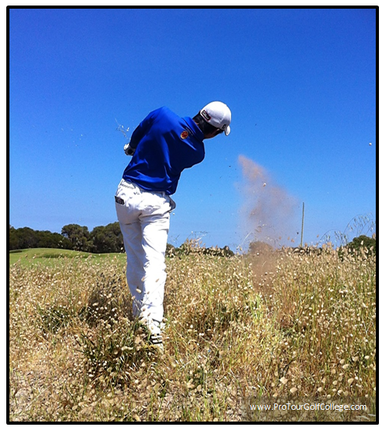 If you don't practice tough shots your game will be weak If you don't practice tough shots your game will be weak No Surprises Why don’t all these challenging shots get practiced enough? The answer is simple; they’re not fun to practice. Golfers are motivated to hit shots that result in better outcomes, rather than practicing shots that show them up as less than competent. The point here is that as you get closer to par the type of golf shots you are likely to face more often will be the challenging shots you don’t like practicing, and they will find you out. At Pro Tour Golf College we share a simple philosophy about this with our students. We say that you should never be surprised when you play because you should have practiced all the types of shots you are likely to be confronted with, and you have developed a high level of competency playing the most challenging shots. I bet you can easily picture a top tour player executing a great recovery shot from a tough lie? The great golfers can do this because they spend a great deal of their practice time developing and improving their trouble shots so they can handle them anytime. And you should too. Golf in our experience is a game where 25 percent of the time you will experience your A Game, and 75 percent of the time you experience your B and C game. In other words 1 round out of 4 will seem relatively easy, and 3 rounds out of 4 won’t. Practice your golf skills in the stress zone at least 70 percent of the time to build tough golf skills that help you to perform when it counts. So you need to build your game around the tough days, the days when the game of golf challenges every fiber of your being. These are the days when you need more patience, a high frustration tolerance and well developed 'tough' skills to come out on top with a good score.  This is the game of golf you should be preparing for, and the way you practice your golf skills will determine to a great extent how you perform them most of the time. If you want to get yourself out of your performance rut and onto the path to making real progress with your game, and also much better golf scores in tournaments, then do yourself a favor and practice the tough strokes as often as you can. You will find that the tough days are more manageable, and the good days happen more often. Lawrie Montague and David Milne - Pro Tour Golf College Your Success On Tour is Our Business 5 Golf Improvement Hacks: How to Get Your Game Unstuck and Back On-Track Fast with Hack # 423/8/2014
 Photo by PTGC Student Candice High Photo by PTGC Student Candice High In our last article on our third golf improvement hack we discussed the value of establishing transition points built around game improvement within a 12 month period. In this article we are going to share the 10 golf improvement power questions that you must answer to start to create the momentum that will get you moving forwards towards the outcomes you want. There’s an old saying that goes something like this; “the answer to your problem is in the question that you ask,” and nothing is truer than this. Quite often golfers get stuck with their game because they don’t ask the right questions the right way. So what are the right questions? These are the ‘how’ and ‘what’ power questions that you can ask that will empower you to move forwards, create momentum and make progress with your golf. They are not the ‘why’ questions that you are probably asking often, questions like these;
OK, so enough of the "why I can't" questions; let's aim our focus on the "how and what" golf improvement questions to get you moving steadily towards your desired outcomes.  Golf Improvement Hack # 3: The 10 Power Questions You Must Ask There is real power in asking great ‘how’ and ‘what’ questions, and the following 10 power questions will definitely get you moving out of your rut and onto the path of continuous golf improvement. Make sure you have a note book, pencil and eraser handy to write down each question and whatever you do... DON'T TYPE THEM INTO YOUR COMPUTER OR PHONE Writing your outcomes with a pencil is far more powerful and will help you to internalize your answers which will go a long way to helping you realize your outcomes inside of 12 months. Also by writing your answers in pencil you can keep adjusting and improving the answer until you get it right. So let's get into the 10 golf improvement power questions right now and start changing your situation today!  The Detail If I asked you to describe with detail a canoe could you do it? I bet you probably could, now, what if I asked you to describe an ocean liner, could you do that? Both of these craft float on the water but the scale and detail of one compared to the other is miles apart. When you take the first step towards achieving your outcome you need to be very specific with how you describe and write down what you want. The Question..."Of all the things that you could be, have or do, what one specific outcome do you want to achieve with your golf within the next 12 months?" When you answer this important power question please remember to state it as positively and as specifically as you can; that is, describe exactly what you want positively, NOT what you don’t want. Also consider that this outcome you want to achieve within 12 months will be definitely within your control and not fully dependent on others. It has to be something you can achieve with your work, effort or dedication, and not someone else’s.  The Evidence In martial arts as individuals improve and make progress they are awarded a colored belt that tells them and others that they have achieved a certain level of competence with their skills and knowledge. They are rewarded for their effort and there is evidence that supports the work they have done. The Question..."What will your proof or evidence look like when you achieve this outcome you want within 12 months?" In other words how will you know when you achieve it? Will it be something you can touch, see or feel? Describe it exactly as you want it. Is it a trophy you can pick up and hold? Or is it a score average you can see on a computer screen-- or possibly it’s confirmation from your golf instructor that a skill you have been working on for some time has been learned and earned?  The Opportunity There’s no doubt that when you achieve something of significance it affects your life in many different ways. Your environment changes and the elements within your environment change as well. One of our professional students recently won his first big golf tournament and as a result, not only did his bank account grow by a few more zeroes, but as a result of his win he will be offered opportunities that were not available to him before his win. The Question..."When you reach your outcome within 12 months how will achieving this outcome change or affect your life. What will achieving this outcome do for you?" Your life will change if the outcome you strive for is valuable enough to you...  The Consequences Now everyone will be happy when you achieve your outcome. Yes it's true; often people you know and call friends are happy and comfortable when they perceive you as being on the same level as them, and when this perception changes for them they can feel excluded. Consider also that a change in the position or placement of a value can create huge consequences; like for example if someone decided that working harder is more important than time with their family. The consequences of a decision like this can mean that the effects can be widespread and far from positive. The Question..."When you achieve this outcome how will it affect those around you like you family members, your friends or factors such as your health and well being?" Always understand that their are consequences to any new action or activity and be prepared for it...  Quid Pro Quo There’s one indisputable fact when it comes to achieving worthwhile outcomes and it is this; to achieve something of value you are required to sacrifice something of value in return. This is a simple exchange of something for something (quid pro quo - Latin) and this sacrifice could be extra effort, or more time invested in improving some aspect of your process leading to your newly defined outcome. The Question..."What is the sacrifice you will make to obtain this outcome? How do you know that what you want to achieve is worth the price you have to pay?" Are you ready for the sacrifice you must make of time and effort that is required for you to change the direction of your life?...  The Confidence Achieving your outcome will influence many things in your life. Confidence for example is a bi-product of the knowledge that you are very good at something because of your ability to know how to achieve consistent outcomes that you want. All successful individuals have high self-esteem—that is they feel good about themselves as a result of achieving their goals, and it will be no different for you. The Question..."What else in your life will improve when you achieve this outcome?" Just as there are negative affects by achieving worthwhile outcomes there are many positive ones as well, what are they likely to be when you achieve your outcome?...  The Leader Apart from the benefits of more confidence and self-esteem, the other important factor is how your self-image will change on the golf course as a result of achieving your outcome. Think of any successful individual from any field of endeavor and notice how influential they are with those around them because of how they see themselves and project it outwards in the context of the things that they do really well. The Question..."What kind of golfer will you become when you achieve this outcome?" You will notice that all the great golfers have a presence about them that influences those around them. It's a quiet confidence that gives you the impression that they know they are great golfers, and that they know that you know that they are great golfers...  The Help Throughout the history of the human race people have made progress with the help of others. You simply cannot climb to the top of your mountain without the assistance of others who have knowledge and experience you can leverage from. With high achievers it is mentors or teachers who help to advise them on their journey to somewhere they have never been before. The Question..."Who will help you to achieve your outcome within 12 months? In other words do you already have resources in the form of teachers or instructors who can help you?" Do you currently have the knowledge and skills you need to make progress towards this outcome, and if not, do you have you access to those that can help you?...  The Options There is always more than one way to get to your desired outcome. Your challenge will always be to determine the surest path to your outcome—though not necessarily the path of least resistance, it will be the path that not only leads to your outcome but probably also requires you learn to be more persistent and patient than ever before. You cannot escape the fact that you will be required to work hard to achieve your desired outcomes, however the path you choose determines to a great extent the type of work you do and who you will do it with. The Question..."Is there more than one way to get to your outcome? Have you considered all the different options available to you?" Are there alternatives or other courses of action that you can take that might get you to your outcome sooner?...Write down the options you have and then decide on which one will be best for you.  The Action Look around you and you will notice that everything was at first an idea that someone put action into and made it a reality. They not only thought about what they wanted, they did something about it by taking action, or the first tentative step followed by another and another... Success achieving your most important outcomes always gets down to making the first positive step. The Question..."Specifically, if you were to make the first step today what would it be? Could you move forwards today if you wanted to?" Make sure when you answer this question it is answered in a positive, specific, and achievable way and probably with a bit of a stretch...  So there you have it 10 golf improvement power questions that will help you to get out of your current rut or sticking point and on a path to better golf. Remember the power of this lesson is in asking the questions the right way. Up until this point you have probably been asking the questions differently to this. Spend the time today to sit down with your pencil, notebook and eraser and do your best to answer each question thoughtfully and with the emphasis on being a specific and honest as you can be. See you next week for the last of our 5 golf improvement hacks. Lawrie Montague and David Milne - Pro Tour Golf College Your Success On Tour is Our Business 5 Golf Improvement Hacks: How to Get Your Game Unstuck and Back On-Track Fast with Hack # 316/8/2014
 If you stand on the top of a ladder you can get a better view of where you are, which makes it easier to work out where you wish to go. You start at the bottom of the ladder and place one foot on a step, and then another, and you push yourself up through each step until you reach the top. These steps are transition points on the journey to the top of the ladder. They are in a lot of ways like rest and reflection stops along the way that help you to know that you are making progress. How much easier do you think it would be to get your game through a tough patch if you knew that the key to moving through-over or around your current performance obstacle got down to making the next step on the ladder? That’s right, many times the obstacle holding you and your game back can be removed by simply making the next step--with one small but important requirement; that next step you decide on is part of a well imagined and well defined process to a much better golf reality within a 12 month period. The trouble with this idea is of course that you have to know where you want your game to go, and there lies the challenge for many golfers, they often don't know where to go with their game, hence the problem of being stuck. And when all is said and done; where there’s no process for improvement, there’s also no goal. Too often golfers who get stuck with their game are continually reacting to poor performances in the moment. They will quite often resort to trying this method or that tip to try to get themselves around the problem, rather than looking at the bigger picture first, of where they want their game to be further down the road. With a big picture view of your game it is easier to decide on the steps that would lead you through the sticking point to the other side. This doesn’t mean that the place you decide on is your ultimate destination, because achieving goals is not so much about getting to destinations as it is about passing through transition points. Transition points are the guide posts along the way to your bigger goals, and they help you to know whether you are on track or off track with your game. You are putting effort into your game so you can make progress, and the guide posts provide feedback that you are getting there. And that's what this weeks golf improvement hack is all about. 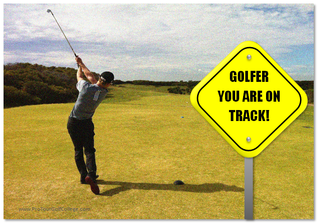 Golf Improvement Hack # 3: Build Transition Points to Create Momentum Our golf improvement hack this week will show you how to create a simple yet highly effective way to set guide posts along your development pathway to help you build the necessary momentum to drive your game forwards. So assuming that your game is stuck in a bit of a rut at the moment, a good starting point might be to decide where you want your game to be in 12 months’ time? Have you ever thought about where your game will be 12 months from now? Start imagining a better version of you and your game. What would that look like? If you are someone who has been struggling to break through to a better game this might be challenging, but believe me it is important that you start imagining where you want your game to go. When we ask this question to our students at Pro Tour Golf College; “where do you want your game to be in 12 months,” we mean that we want them to define what level of success they would like to achieve within that time period. This could be an improved score average; or a particular change to a part of their technique; or possibly a tournament result. The 12 month view is always a good starting question to help you to clear your thoughts and helps you to get your game unstuck, so you can start making progress. The clearer you are about a 12 month goal the better; then you can build the transition points along the way that lead you and your game through 12 months of lessons, practice and playing tournaments. The Transition Momentum Model So have a look at our simple info graphic below describing our Transition Momentum Model that will help you to think about where you game is right now and determine what your transition points would be over a 12 month period. In this example I'm using a 12 month score average as the target, and in our illustration our golfer has a 78.6 competitive stroke average and she has decided to aim for an improvement 2.6 strokes within 12 months. This would be a very reasonable target to aim for. Now the idea from here is to chunk down the 12 month number (which in this case is 76) into smaller and more manageable bites, and then go to work on the first one only. For example, you can see that the first chunk at the 3 month transition is just .65 of a stroke better than 78.6. I'm sure that you agree that .65 is not a lot of improvement, but keep in mind it is improvement, therefore doing what you have done up until this point of time won't give you .65 of a stroke improvement in the first 12 weeks unless you change what you are doing. How do you do this? Once you have worked out your transitions, the key is to determine what you need to do in the first month with the help of your golf instructor to get to the first transition point. Once you have worked out what you want to achieve in the first month, then chunk it down further and further to where you are working out what you will do in the first week. Get the idea? How did we arrive at this number of .65 of a shot you might be asking yourself? We started with a realistic target score for 12 months of 76.0 and we subtracted it from our current score average of 78.6, and then divided it by 12 (78.6 minus 76 divided by 12 equals .65). We then subtract .65 from each transition target (3, 6 and 9 months) and then you work out what type of golf lessons you will need between each 3 month transition, plus the type of practice strategies that will help you achieve your 3 month score. You play in tournaments and your strategy is to implement what you have been working on with your instructor to achieve ---or get as close to these interim targets as possible. These transitions help you to create momentum in your game which in this context means that the transitions provide you with the fuel or impetus for your journey forwards. The Power of Momentum Momentum is a very cool principle that describes the energy gained by a moving object. Momentum in your game is derived from the energy of your positive thoughts focused around short-term goals (your transition points) which when translated into your weekly effort develops weak skills into strong skills and creates confidence. This confidence builds your momentum and keeps you moving continually along your golf improvement pathway. Momentum also describes how hard it is for your progress to slow down and stall. If you have formulated really useful physical/mental weekly, monthly and quarterly development strategies, you build the momentum you need. Remember transition points are like fuel stops along the way that feed the momentum and keep you heading towards your goals. You need these transition points to stay the course, and if your 12 month goal is truly worthy of your effort, then the transition points will just help you more than you can imagine.  So start to build weekly and monthly development targets around your quarterly transition points for improving your score average, or for improving your golf swing, or some part of a technique you want to improve. We guarantee that you will not only get yourself out of the rut you're in, but you will build huge momentum and take your game anywhere you want it to go. See you next week for Golf Improvement Hack # 4. Lawrie Montague and David Milne - Pro Tour Golf College Your Success On Tour is Our Business 5 Golf Improvement Hacks: How to Get Your Game Unstuck and Back On-Track Fast with Hack # 29/8/2014
“Any intelligent fool can make things bigger, more complex, and more violent. It takes a touch of genius — and a lot of courage to move in the opposite direction.” ― E.F. Schumacher 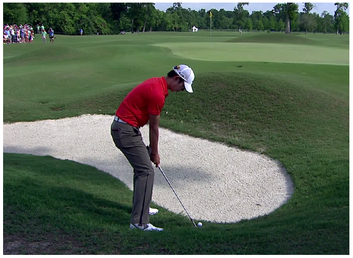 The pathway to continuous improvement in golf is long and demanding for most, and the reality is that the majority of those undertaking the journey will decide to set up camp along the way and never complete it. They will do this for a number of reasons and the most likely is that as their golf performances get closer to “old man par” they will need to acquire new skills and also develop and continually refine their existing skills to translate them into continuous improvement. This seems to be easier said than done. One of the most common mistakes we see advanced golfers make is that they quite often think that their current swing needs to be partially or even totally re-built, or changed if they are to keep travelling forwards on the path to golf success. In most cases we wouldn't agree with this approach. Like we say to our students at Pro Tour Golf College "there are many tragic stories of lost souls trapped in golf swing limbo whilst they traveled the path to golf swing perfection". Too often these golfers were actually performing really well and making progress but they determined (or someone helped them to determine) that in order to take their game to another level they required a major change. Quite often this change is another teacher and another golf swing method or style. Unfortunately this approach to change just makes playing golf a lot more challenging, and many of these golfers get very frustrated at their lack of progress and give up and do something else. Those that hang in there usually don’t make the level of progress they made prior to making the changes and they end up in a golf technique limbo. In today’s article we are going to share our 2nd golf improvement hack and our advice will help any golfer who is contemplating a change to their technique to understand the consequences of this decision and to approach it in a simpler and more manageable way.  Golf Improvement Hack Number 2: Reduce Skill Complexity to Increase Skill Competency The stroke that has the smallest number of rotations in the golf swing is the simplest stroke. The putting stroke is the simplest stroke in golf because you move your shoulders to move the putter and every other body part remains relatively still. The most complex golf stroke is the full swing. This stroke has the most rotations and requires almost supernatural timing to make it perform consistently. In between these two strokes are all the in-between strokes from the simple shorter strokes to the longer more complex ones. Think about this for a moment, you have thirteen major joints in your body rotating in 3 dimensional space, and you also have the timing of all these rotations to achieve a sound and consistent impact. The more rotations you employ in your golf stroke-the more challenging it is to produce consistency. This is the primary reason why amateur and professional golfers struggle to improve. It is fair to say that most golf instruction is focused on improving the most complex golf stroke—the full swing and the problem is not the ability of golfers to learn the stroke, it is the learning to forget "how to swing" that is the most challenging part of it. If you want to get out of your swing rut and improve your golf faster, then you need to learn and understand this hack; “Reduce Skill Complexity to Increase Skill Competency.” This hack say’s that continuous progress is made by reducing the complexity of the stroke pattern to decrease the time it takes to learn it, to get to the “forget how to do it” stage. Have a look at our Golf Stroke Complexity Matrix (below) to understand how as you increase stroke complexity you also increase the amount of hours it takes to move your stroke to the unconscious competence stage or the forget how to do it level. 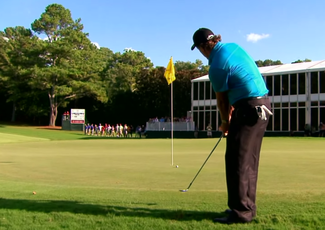 Stroke Complexity Rank 1. These are strokes where you keep your hand stroke below your hips and the club-head arc travels below your knees in the back swing and forward swing phases. These are the putting and chipping strokes in golf and are the simplest strokes to learn and play. They require less hours to achieve the learning level of unconscious competence or the forget you know how to do it level and the rotations involved are a minimal amount of shoulder rotation for putting, and a minimal amount of hip and wrist rotation for chip shots.  Stroke Complexity Rank 2. These are strokes where you keep your hand stroke below your shoulders and your club-head travels no higher than your hips in the back swing and forward swing phase. These are your short pitch shots played around the green and require minimal shoulder rotation and hip rotation and wrist cock rotation. Because the rotations are minimal they are strokes that are considered easier to learn and habituate and the time required to learn skills like these range in 75 to 100 hours depending on the quality of your practice approach.  Stroke Complexity Rank 3. These are the strokes where the hand stroke is below your shoulders and the club-head arc travels no higher than your shoulders. These are long pitch strokes, short approach wedge shots and pitch shots from the rough and trouble lies. The increase in hand stroke length means that the shoulders and hips will start to rotate increasingly and the wrist cock rotation will be between 25 and 75 percent of its maximal amount. This stroke because it is travelling further is becoming a little more complex because of the increased rotations and it could take you anywhere from 100 to 150 hours of repetitions to habituate this stroke.  Stroke Complexity Rank 4. These are the strokes where the hand stroke is on or just below your shoulders and the club-head is now travelling well above your shoulders. The shoulder and hip rotation is almost maximal and the wrist cock angle will be between 75 and 100 percent. This type of stroke is used for most green-side bunker shots, most of your approach wedge shots, as also many of the recovery shots you will play from the tree's etc. This stroke is high on the complexity scale and requires anywhere from 150 to 250 hours of repetition practice to habituate this type of stroke.  Stroke Complexity Rank 5. These are golf strokes where the hand stroke is above your shoulders and the club-head is travelling well above and behind your shoulders for many golfers. This stroke is of course the stroke you use for tee-shots, long approach shots, fairway bunker shots and long trouble shots. It is the most complex of strokes to learn and requires enormous commitment because it is likely that to change any part of your stroke at this level will require from 250 to 500 hours of repetition practice. The rotations in the shoulders, hips and wrists are at maximal level and the forces that are generated are the highest. This is the stroke length many elite golfers continue to work on even when they reach tour level and quite often fail to realize the consequences of changing movement patterns at this level of complexity. So How Do You Simplify Your Stroke? First start by ranking your golf stroke change current level of complexity. Are you working at level 4 or 5 on the complexity scale? If you are, then discuss with your golf instructor if he/she thinks that you need reduce any of the rotations to reduce (or increase others) the complexity of the motion and improve the timing, moving you towards the unconscious competence stage of learning earlier. If you are stuck finding ways to make progress with your game you need to consider Hack # 2 carefully and realize that any work with a level 4 or higher complexity rank will require significant investment in these three elements: 1) ...A significant increase in the amount and quality of repetitions 2) ...A significant amount hours practicing the change/s 3) ...The time frame identified in the development plan to practice and develop your change/s outside of competing in tournaments There’s no doubt that if you can simplify your stroke you can repeat it more easily.  Take a good look at the technique you wish to improve with the assistance of your golf instructor and work out a plan for reducing the complexity in your stroke to increase your competency. Keep it simpler and you'll get there faster. See you next week for Golf Improvement Hack # 3. Lawrie Montague and David Milne - Pro Tour Golf College Your Success On Tour is Our Business "We discovered that different people had widely differing Timelines, and that the shape of the Timeline in space not only determined whether a person was "in time" or "through time", past-, present-, or future-oriented, but determined many other aspects of personality as well."  Imagine that you have reached a point with your golf development where you have run out of ideas on how to improve your golf. You have hit the wall and progress has come to a sudden—bone jarring halt. Possibly you have been stuck on a particular score average or handicap for months and you can’t seem to budge it no matter what you do. Scary thought right? Yes it’s daunting and by no means uncommon because many advanced golfers come to a fork in their golf development pathway where they don’t know which way to go. They often describe this sensation as “being stuck “or that they are in a rut, or that they can’t see the next step in their journey to better golf. Have you ever experienced this? Maybe you have, and maybe you haven’t yet, but one things for certain; every golfer will go through a period of golf famine with their game, and our new series on the 5 game changing golf improvement hacks will definitely help you to get through it and on to better scores and more success with your game. So let’s get into it right now with the first hack. 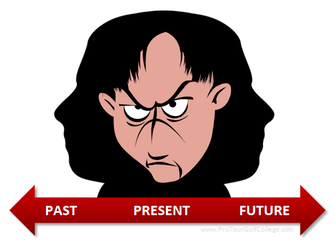 Golf Improvement Hack Number 1. Which Mental Time Zone Do You Operate In? At Pro Tour Golf College we have observed many times over the years a common characteristic with advanced golfers—especially those who believe their game is stuck in a rut. When you practice and play golf you rely on your memory to determine how you play shots and also whether you can play them successfully and confidently or not. When you access stored information about your previous experiences you essentially are accessing coded (cataloged) experiences from your past and using it to make decisions and execute shots in the present. How does a chronic slicer of the ball know that they slice when they arrive at the first tee? They have stored information from their past related to slicing tee-shots and they associate that past experience with tee-shots in their present state. As long as they keep referencing their past to determine their future outcomes they will tend to hit the same types of shots over and over again. This is an example of being ‘stuck in the past’ because it seems that no matter what you do, you keep slicing your tee-shots or missing short putts etc in the present. Most golfers don’t understand that their sense of time for developing and improving golf skills (their personal golf development timeline) is different from one golfer to the next, and that there are golfers who tend to develop their game with a “past oriented outlook,” whilst there are others that have a “present oriented outlook,” and still others have a “future oriented outlook”. I’m sure you know golfers who talk about their past a lot, or a golfer who is always planning and talking about their future but not getting much done in the present? Keep in mind that time as we know it is a mental construct, it’s not real, and every person understands time differently, and is influenced by it differently as it relates to getting things done in their life. For example, what is your motivation strategy for getting things done? Do you use any of these?... a. I’ll do it now (present) b. I’ll get to it later (future) c. I've done it before, I know how to do it (past) Also our concept of time shapes the way we develop our concept of self, and as you can see, it also influences how we respond to challenges and adversity in our life.  Past Oriented Golfers (The Historians) These golfers often reference their improvement strategies the most from past experiences. They say things like; “I’ve always done it this way or that way” or “my teacher always told me this…” and they quite often find it difficult to plan into the future because of this strong orientation and ties with the past. They like to bring up past stories of their accomplishments and shots they played, and they tend to be excellent at remembering detail in their past lessons. They seem to be the golfers who can tell you exactly where they were and who they were playing with because they have excellent recall for past events. They also can be inclined to be stubborn and resist new information unless it is consistent with successful strategies they have used in the past. They can get quite frustrated when they struggle to make progress often not realizing that because they rely heavily on reviewing and reliving past experiences they often cannot find a strategy from their past that will move them forward. The Past Oriented golfer’s motivation strategy is slow and steady wins the race. They are never in a hurry to get anywhere (and are often late) because they live much of their life referencing achievement and effort from the past. The Past Oriented Golfers Improvement Strategy is to acknowledge that even though achieved great accomplishments in their past, progress is made by imagining very specific outcomes they would like to achieve within the next 4 weeks and that whatever they decide is important to them it needs to link into greater achievement’s they wish to accomplish 3, 6, 9 and 12 months into their future.  Present Oriented Golfers (The Journalists) These are the golfers whose tendency is to experiment and dabble with different methods, and they rarely stay with any method of improvement for too long. They get distracted easily, and struggle to maintain consistent routines as a result. They also like to change clubs on a regular basis because they are always looking for improvement and short-term gain, and they usually know a lot about the latest golf club technology from manufacturers. They also like to watch lots of videos on the internet looking for the next best thing to work on. Present oriented golfers like to change instructors and teachers more often as they like fresh information and can get bored easily with repetitive instruction. If you want to know what’s going on in golf they are the ones to ask because they read lots of golf related content on the internet and also subscribe to monthly magazines and often have very active Twitter accounts as well. A high proportion of gen x’s and millennial’s would fit into this category simply because they have been brought up with technology (the information age) and this has dramatically affected how they experience the world around them. They expect to know and do things faster because their environment is continually feeding them with instant information at the press of a button. The motivation strategy of Present Oriented golfers is that they tend to expect results quickly and get excited by knowing new things, but they don’t realize that even though the internet provides them with information at lightening speed, learning and improving motor skill patterns is another thing entirely and takes additional time to learn properly. The Present Oriented Golfers Improvement Strategy is based around finding their bright and shiny objects or uniqueness, and strategies or technologies they haven’t heard of or used that captures their attention will generate a lot of interest in them. Build a plan to learn and improve golf skills with feedback from technology that can measure their ongoing effort or activity because to them technology has a level of credibility that they believe is important.  Future Oriented Golfers (The Visionaries) These are the golf dreamers who are very good at setting targets and goals to drive them and their game forwards. They often talk and reference future events and use this to get excited about how good their future events are going to be, and they like to describe their improvement in terms of “what it will be like when they get there”. They are driven by the performance targets they establish, and are the most patient golfers out of the three time orientations because they plan what they want to achieve and tend to stick to their plans the best. They also tend to be golfers who change their clubs less often because they don’t often see this as a priority and rely more on their ability to follow through on a well-constructed plan for improvement as a means for improving their golf. Their motivation strategy is built around looking forwards and whilst they have a vision for something they believe that they can find a way. If they can see it, they get excited and start to work on ways of achieving it. The Future Oriented Golfers Improvement Strategy is that they are often so far ahead of the future they can find it difficult to do a good job of their daily process that will get them there. They need to have short-term goals for the day that gets them working on the specific processes that will improve their chances of achieving their outcomes in the future. The thing to keep in mind with time orientations is that you will use all of them everyday however you will notice by paying attention to the way you describe your approach to golf improvement that it will be influenced by your sense of time in the present, past or future.  Pay attention to what you are saying and notice the clues in the way you express yourself to others and by following our simple improvement strategies from our article you will get your sense of time in balance with your improvement strategies which will get you out of your rut and back on the track to golf improvement. Next week we'll continue our series with golf improvement hack number 2. See you then. Lawrie Montague and David Milne - Pro Tour Golf College Your Success On Tour is Our Business |
Archives
June 2019
|
Proudly Supported By
Copyright © 2011 - 2018 Pro Tour Golf College
Website Managed By Golf Performance Media
All Rights Reserved
Website Managed By Golf Performance Media
All Rights Reserved

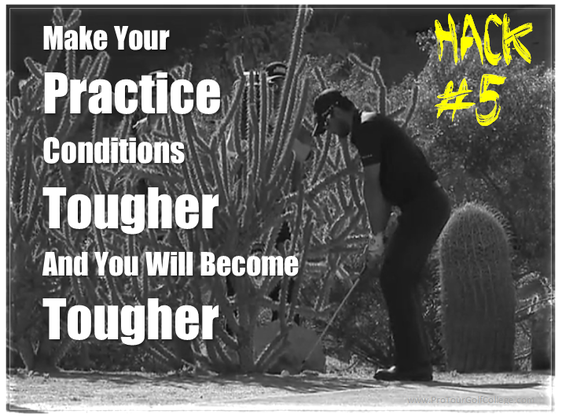

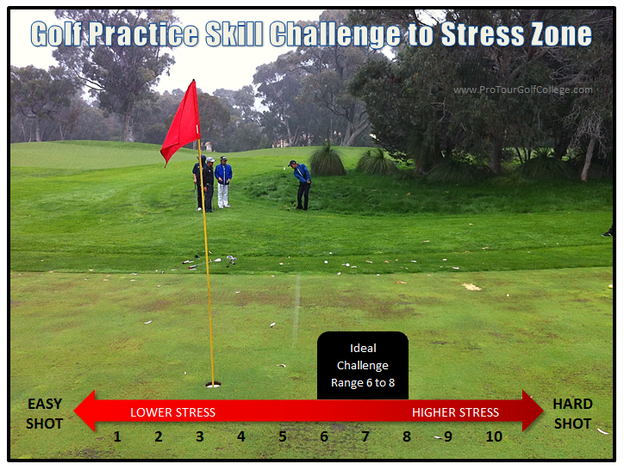

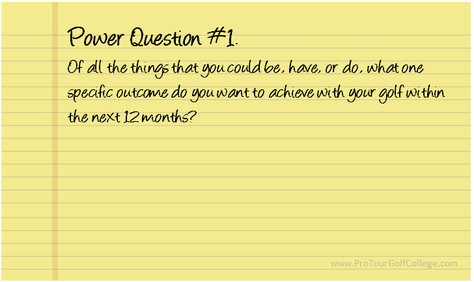
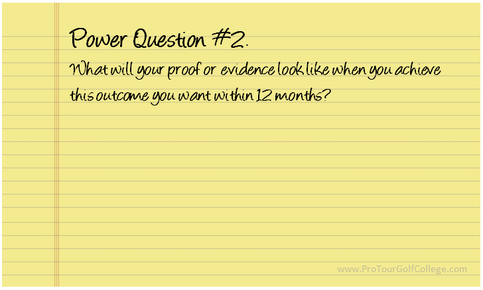
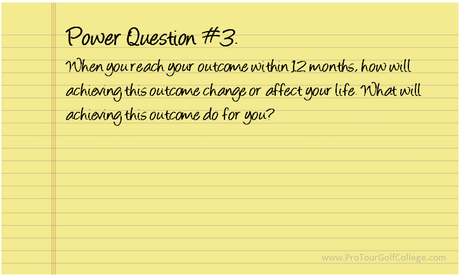

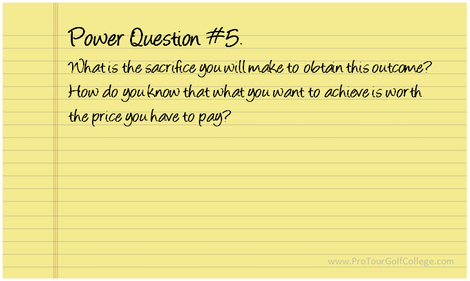

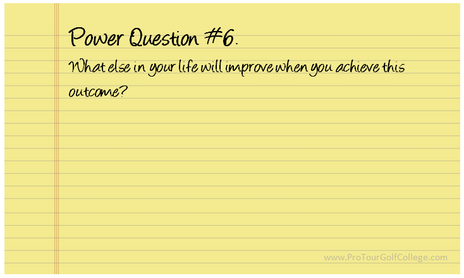
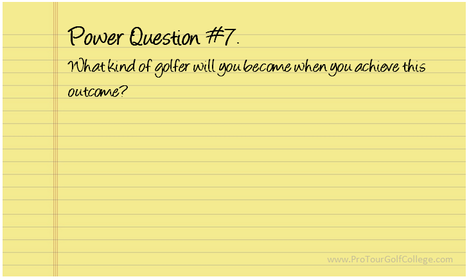
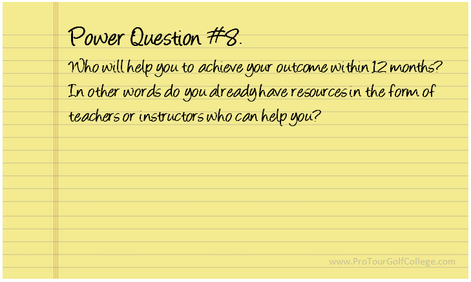
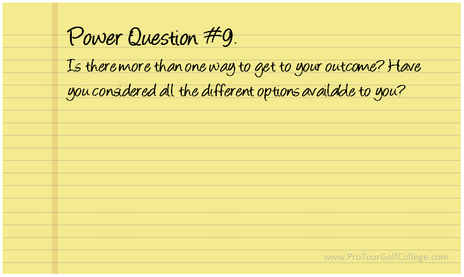
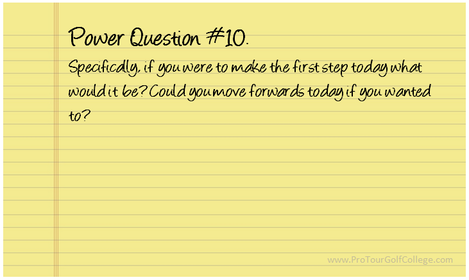

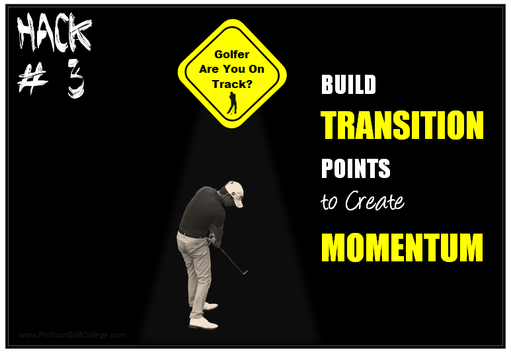
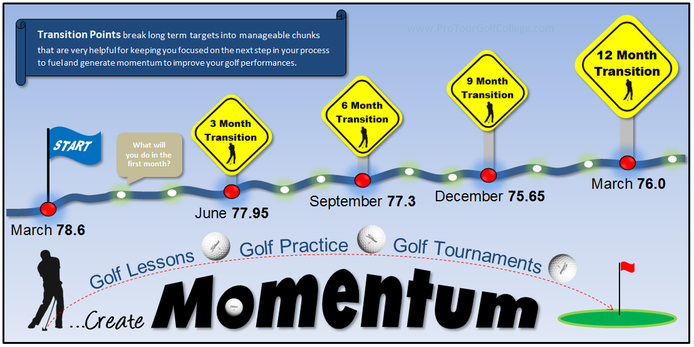
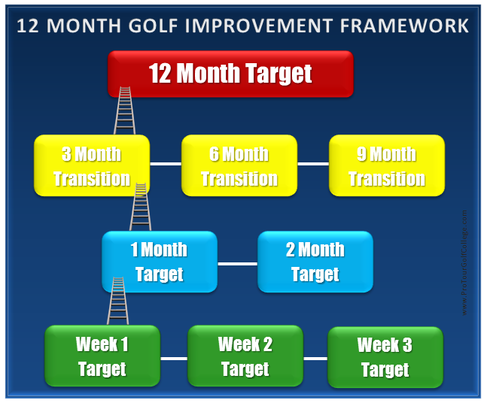
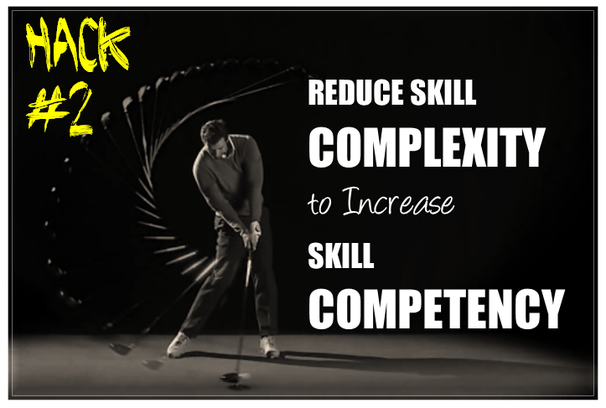
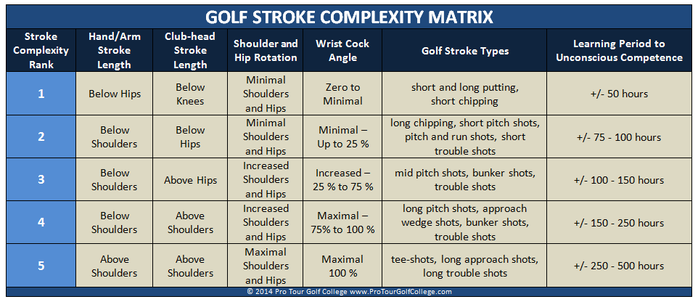
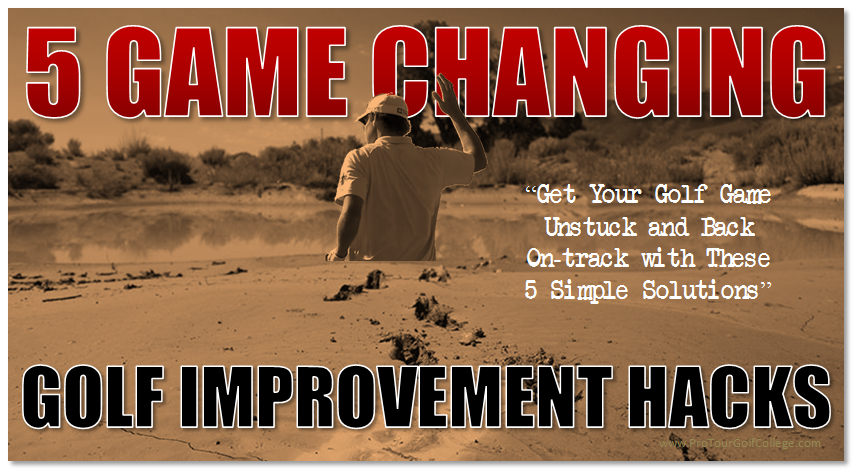

 RSS Feed
RSS Feed



